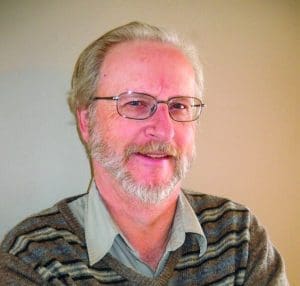
By Will Verboven Contributing Editor
Most folks have seen those towering symbols of the new age of renewable energy, that being the industrial windmill operations, usually located in the wind-prone areas of North America. They look ominous and alien and despoil the visual scenery wherever they are located. Renewable energy industry (REI) zealots and promoters, in an effort to soften their stark image, like to refer to them as “windmill farms.”
They are not farms by any definition but are massive industrial operations primarily developed and operated by huge corporate interests, many from China, Denmark and Germany. Those three countries are mainly involved because that’s where most windmills and solar panels are manufactured. It’s been reported that up to 70 percent of the investment in any windmill or solar operation actually ends up in the pockets of those foreign manufacturers and project developers.
In southern Alberta, billions of dollars have been spent building industrial windmill and solar operations. It’s the result of a perfect meeting of ideal wind and solar conditions, government grants and tax incentives, and very few regulations and restrictions on where and how big the developments can be constructed. In addition, Alberta’s location makes it feasible to sell green power at a premium to big companies like Microsoft and others who want to greenwash their corporate image. The carbon credits from those projects are eagerly bought up by utilities in California. It’s been said Alberta is the easiest place in the western world to make big profits on REI projects – hence the stampede of global investors.
Landowners and local rural municipalities have been mesmerized into signing on to the energy gold rush by promises of new tax revenues and big royalty checks. However, the latter has seen a rude awakening for some landowners who find out their royalties are based on actual electricity sales. That only happens when these operations actually produce power, which is only 30 percent of the time for windmills and 12 percent for solar panels. REI zealots and developers rarely mention that astonishingly low production rate – but it gets worse. In many areas, giant windmill blades kill thousands of birds, raptors and bats. That carnage increases the number of scavengers like foxes and coyotes, many of which also have an appetite for domestic livestock.
There are almost no research projects to compile the data on wildlife losses. Land and windmill owners won’t allow site access because they fear bad publicity from the ongoing devastation. Green lobby groups like Greenpeace and others don’t seem concerned about the wildlife loss issue because they see themselves as allies of REI development as part of their own philosophy of saving the planet. REI development gets worse.
This part of Alberta has also seen thousands of acres of industrial solar panel operation development. This is the most menacing of REI projects because it covers up valuable agricultural and grazing land. Growing crops under solar panels is commercially not feasible or viable. Granted, in some areas with higher rainfall, sheep grazing under the panel structures has seen some success. But it’s not free – water sources, fencing, predation and herding all require professional, knowledgeable shepherds. In drier areas, because solar panels deflect rain into channels, they effectively have a desertification effect, also encouraging infestations of invasive weeds. In today’s world, where billions remain close to starvation, we need more agricultural land, not less. Massive solar operation expansion on agricultural land anywhere is immoral and must stop.
What has pushed the REI boom along is that many solar project developers have been restricted from building in other parts of the world, particularly Europe. Most European countries will not allow their precious agricultural land and tourist-favored scenery to be covered by windmills and massive solar developments. It’s why windmill development over there has been pushed into the North Sea – out of sight, out of mind. European solar development is occurring on warehouses, homes and parking lots as it should, but that’s quite costly. It’s easier and much more profitable to acquire a few thousand acres of flat farmland in Alberta and cover it up with solar panels.
What has become despicable is that whenever the negative aspects of REI development are mentioned, the response from the powerful green lobby and their allies in academia and mainstream media are howls of outrage at anyone having the audacity and disrespect to even mention that there might be issues with these industrial energy factories. That’s because the REI has for so long sat on its moral high horse, being revered and catered to by progressive and politically correct politicians and bureaucrats that the industry feels untouchable.
That has allowed the REI establishment and their allied lobby groups to make outlandish claims about the viability of its output and cover up the impact on land use, the environment, wildlife and scenic degradation. It’s all shielded by the green mantra that REI development is sacred because it will save the planet – so it’s all worth the sacrifice. Even modest predictions note that doing that will require millions of windmills and cover millions of acres with solar panels almost everywhere. The issue demands common sense.







